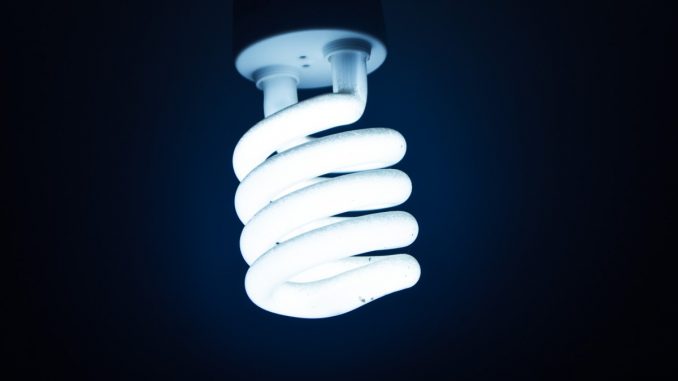
Things just got a little bit brighter on campus.
In a time of environmental consciousness and sustainability, SUNY New Paltz has started the process of replacing all light bulbs on campus with LED (light-emitting diode) light bulbs.
Before switching to LED, the campus was using compact fluorescent light bulbs (CFLs) and incandescent light bulbs, which have been proven to be less efficient and worse for the environment than LED lights.
According to Project Drawdown, “lighting accounts for 15% of global electricity use,” so a switch to more efficient light bulbs will make a substantial difference. Project Drawdown studies climate change solutions and works with policy makers to impliment them.
The interior lights on campus are being replaced in three phases. All exterior lights have already been switched to LEDs.
Buildings that have already been switched over include Minnewaska Hall, Ridgeview Hall, Coykendall Science Building, Humanities, Lecture Center, Jacobson Faculty Tower, Engineering Innovation Hub and some of Shawangunk Hall.
According to Lisa Mitten, the campus sustainability coordinator, switching to LEDS will “reduce the campus’ carbon footprint, reduce energy use and reduce utility bills.”
While cheap to purchase, incandescent light bulbs are not the optimal choice for a campus full of lights. Incandescent light bulbs produce light by heating a filament in the bulb and during this process, 90% of energy goes towards heating the bulb while only 10% goes towards producing light. This inefficiency makes them more expensive in the long run than LED light bulbs.
LEDs use 80% of their energy to produce light, compared to the incandescent bulb’s 10%, according to Project Drawdown.
USA Today reported that an incandescent light bulb lasts an average of 1,000 hours compared to an LED light bulb that lasts an average of 25,000 hours.
Along with incandescent light bulbs, CFLs are also being replaced with LEDs. The main concern with CFLs is the mercury they contain.
“On average, CFLs contain about four milligrams of mercury sealed within the glass tubing,” according to the U.S. Environmental Protection Agency. “Small amounts of mercury can be released into the environment when CFLs break, or if they are improperly disposed of at the end of their useful lives.”
LEDs are a more environmentally conscious choice for the college, as “they use 90% less energy than incandescent bulbs for the same amount of light, and half as much as compact fluorescents, without toxic mercury,” According to Project Drawdown.
These bulbs will prove to be a more efficient light source on campus, and will last longer than their predecessors.
By spring, Haggerty Administration Building, van den Berg Hall, van den Berg Annex, South Classroom Building, Old Library, Faculty Office Building, Fine Arts Building and Old Main will have all of their light bulbs replaced with LEDs as the second phase of this process.

